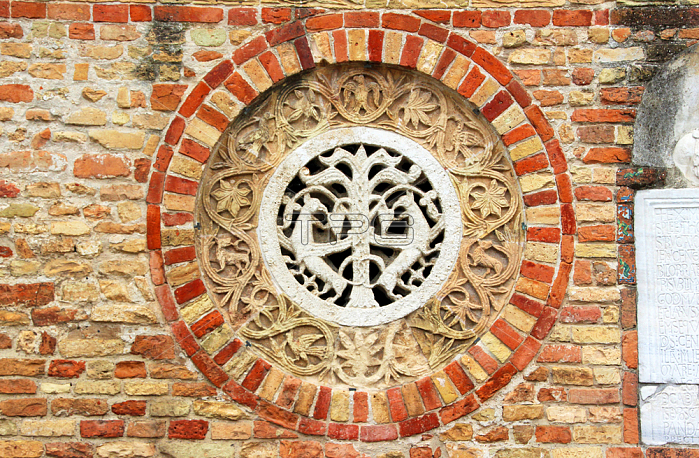
A first Pomposa church was most probably erected in 6th or 7th century in Longobard time by monks of Irish Saint Columb (Columbanus; 540 - 615); on a than island called Insula Pomposiana. A first smaller abbey church of Holy Mary was built by the Benedictine order in 9th century; around 874. The todays extended version was finished in 1026; by master Mazulo in times of highest glory of the monastery; during reign of abbot Guido. The free-standing Campanile in Romanesque longobard style was built starting in 1063 by master Deusdedit. Another important monk in those times was Guido d`Arezzo (Guido of Arezzo); who invented the modern musical notation (early 11th century). The abbey was famous for its scriptorium (copying texts) and had a nationwide impact on Italy. Due to floodings and malaria; the abbey went into decline and was finally left; in 1653. In 1802; it became private property; end of 19th century; it became possession of the Italian State. Restoration took place from 1920 to 1930. The abbey church is famous for ist pavement mosaics and for the frescoes by Vitale da Bologna (ca. 1308 - 1361) and his assistants from the Bologna school. The atrium of 11th century is famous for its facade ornaments; for the integrated bowls; the round windows (oculi) and the oriental byzantine reliefs with grifons and other symbolic animals.
| px | px | dpi | = | cm | x | cm | = | MB |
Details
Creative#:
TOP24912770
Source:
達志影像
Authorization Type:
RM
Release Information:
須由TPG 完整授權
Model Release:
No
Property Release:
No
Right to Privacy:
No
Same folder images:

 Loading
Loading